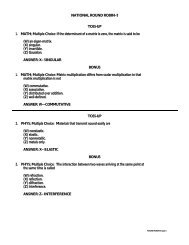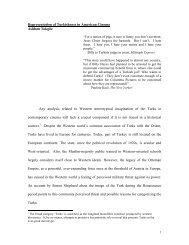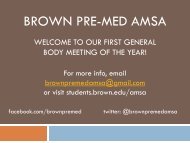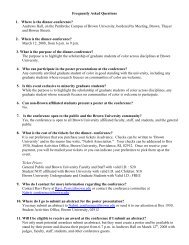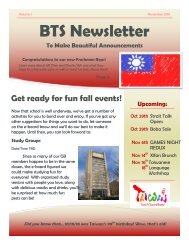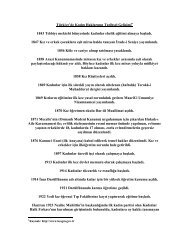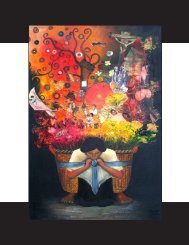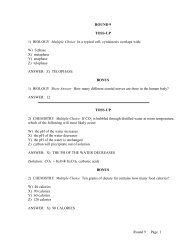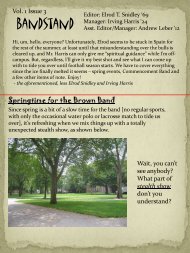Download as a .pdf file - Brown University
Download as a .pdf file - Brown University
Download as a .pdf file - Brown University
Create successful ePaper yourself
Turn your PDF publications into a flip-book with our unique Google optimized e-Paper software.
Contemplative Judaism<br />
hitbonenut, or intellectual meditation, on Torah. 35<br />
Since the Torah itself is considered to be the word of YHVH <strong>as</strong><br />
received through divine revelation, it is regarded <strong>as</strong> part of the infinite,<br />
or ein sof. 36 Thus, when one contemplates Torah, one gr<strong>as</strong>ps the Infinite.<br />
“There occurs the ultimate fusion and integration between finite man and<br />
the Infinite Creator.” 37 The Torah is viewed <strong>as</strong> a means to experience ayin.<br />
The Maggid advises, “I will teach you the best way to say Torah: not sensing<br />
oneself at all, only <strong>as</strong> an ear listening to how the world of speech speaks<br />
through him. One is not himself the speaker. As soon <strong>as</strong> one begins to hear<br />
his own words, he should stop.” 38 Jewish contemplative tradition advocates<br />
the use of Torah for dissolving the ego and experiencing nothingness, and<br />
thus connecting with YHVH.<br />
First-person observance of the meditative mind and body h<strong>as</strong> led<br />
to the development of many contemplative techniques for Torah study.<br />
Torah scholars have noticed that the more relaxed their mind and body<br />
are, the greater the capacity for creative thought. Furthermore, a state of<br />
relaxation causes a higher alertness in one’s mental state, and epiphanies<br />
are more likely to occur under such conditions. 39 Thus, many Ch<strong>as</strong>sidic<br />
m<strong>as</strong>ters encourage students of Torah to pause in silence during intense<br />
contemplation. Some even advise students to sing songs and use melody<br />
<strong>as</strong> a meditative technique to relax the rational mind and therefore become<br />
more intuitive. 40<br />
Mantra meditation is yet another technique used for Torah study.<br />
One chooses a p<strong>as</strong>sage from Torah and repeats it over and over again<br />
silently or aloud in order to draw deep meaning from it. This method w<strong>as</strong><br />
popular among sixteenth century Kabbalists in Safed. Rabbi Cordovero<br />
wrote about how he and his companions regularly went out into the fields<br />
with the sainted m<strong>as</strong>ter, Shlomo Alkabatz, and engaged in gerushin, which<br />
literally means “exile” or “divorcing.” This method seems to have involved<br />
a type of mantra meditation with verses from Torah in order to gain new,<br />
profound insights. 41 No matter which technique one uses, meditation is<br />
considered an indispensable tool for unlocking the mysteries of Torah, for<br />
tapping into the ein sof of possible meanings.<br />
Prayer is perhaps the most common form of Jewish contemplative<br />
practice. There are three daily services in Judaism: the morning service,<br />
known <strong>as</strong> shacharit; the afternoon service, known <strong>as</strong> mincha; and the evening<br />
31



